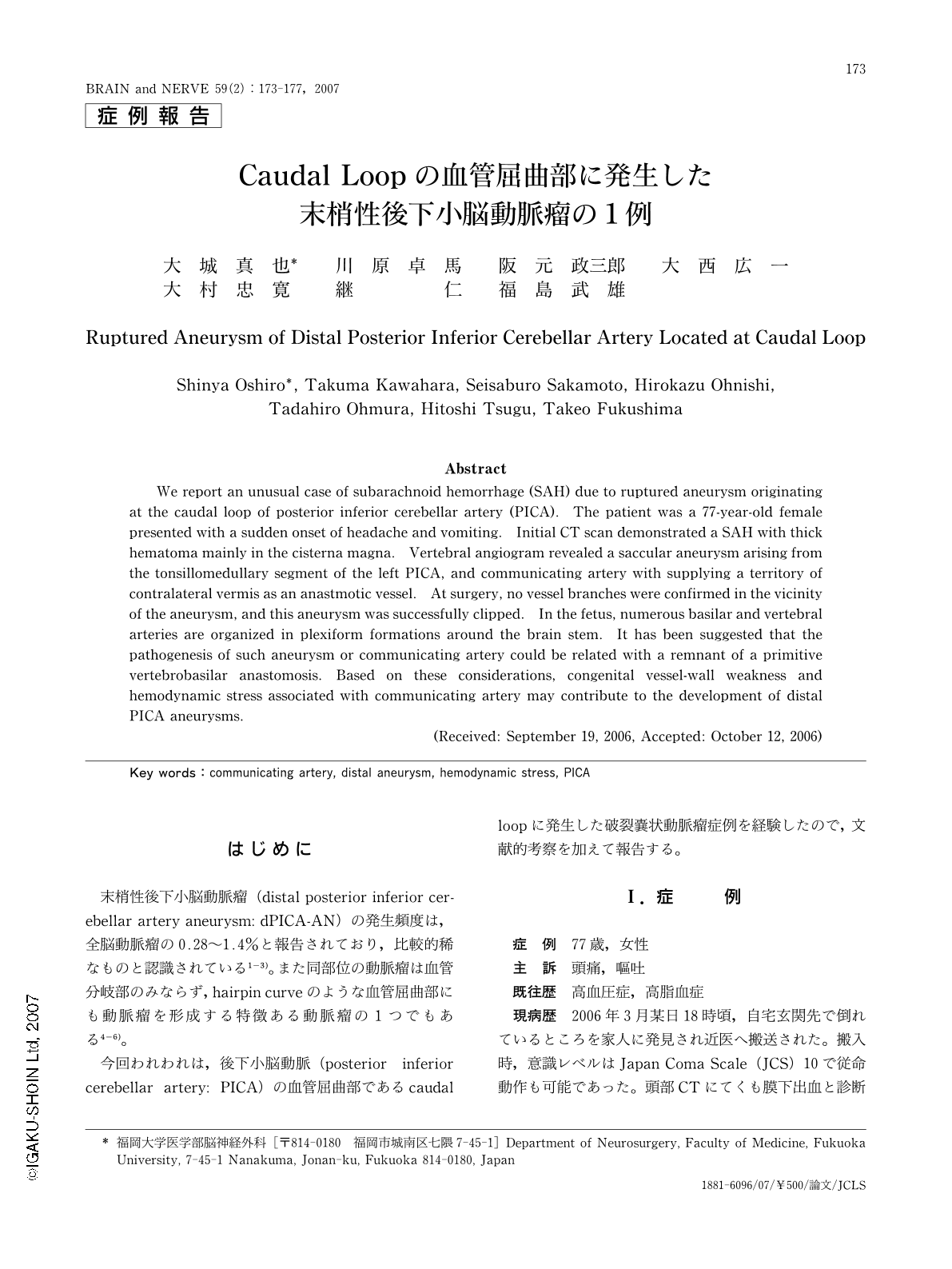Japanese
English
- 有料閲覧
- Abstract 文献概要
- 1ページ目 Look Inside
- 参考文献 Reference
はじめに
末梢性後下小脳動脈瘤(distal posterior inferior cerebellar artery aneurysm: dPICA-AN)の発生頻度は,全脳動脈瘤の0.28~1.4%と報告されており,比較的稀なものと認識されている1-3)。また同部位の動脈瘤は血管分岐部のみならず,hairpin curveのような血管屈曲部にも動脈瘤を形成する特徴ある動脈瘤の1つでもある4-6)。
今回われわれは,後下小脳動脈(posterior inferior cerebellar artery: PICA)の血管屈曲部であるcaudal loopに発生した破裂嚢状動脈瘤症例を経験したので,文献的考察を加えて報告する。
Abstract
We report an unusual case of subarachnoid hemorrhage (SAH) due to ruptured aneurysm originating at the caudal loop of posterior inferior cerebellar artery (PICA). The patient was a 77-year-old female presented with a sudden onset of headache and vomiting. Initial CT scan demonstrated a SAH with thick hematoma mainly in the cisterna magna. Vertebral angiogram revealed a saccular aneurysm arising from the tonsillomedullary segment of the left PICA, and communicating artery with supplying a territory of contralateral vermis as an anastmotic vessel. At surgery,no vessel branches were confirmed in the vicinity of the aneurysm,and this aneurysm was successfully clipped. In the fetus,numerous basilar and vertebral arteries are organized in plexiform formations around the brain stem. It has been suggested that the pathogenesis of such aneurysm or communicating artery could be related with a remnant of a primitive vertebrobasilar anastomosis. Based on these considerations, congenital vessel-wall weakness and hemodynamic stress associated with communicating artery may contribute to the development of distal PICA aneurysms.

Copyright © 2007, Igaku-Shoin Ltd. All rights reserved.


